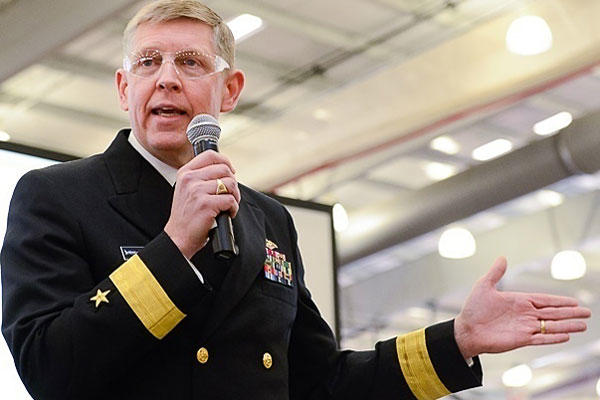SAN DIEGO -- For the Navy, the best defense against a high-tech enemy may be a low-tech strategy.
After decades of building equipment, aircraft and ships designed to communicate with each other and back to shore, the Navy is now looking to "selectively disconnect" its systems to minimize vulnerability to cyberattacks, said Rear Adm. Lorin Selby, commander of the Naval Surface Warfare Center.
"We're going back now and trying to selectively disconnect things and slow down some of these connections and only do it where we think it makes sense, where it's safe to do it," Selby told an audience at the AFCEA West conference in San Diego. "We've got to be more judicious with the things we connect to the internet or to shore, those kinds of vulnerabilities."
Speaking to Military.com following his briefing, Selby acknowledged that reaching this network-optional goal was a multi-step endeavor and could take a long time.
"[Naval Sea Systems Command] is in the process of finding out which systems should be disconnected and which systems should be hooked up, so that's kind of an ongoing process," he said.
This initiative, he said, was connected with CYBERSAFE, a new strategy introduced by the Navy last year to promote better cyber hygiene and minimize system vulnerabilities. The program is modeled after SUBSAFE, which was introduced after the sinking of the nuclear-powered attack submarine USS Thresher in 1963 to ensure subs had the best possible chance of resurfacing safely.
Selby referred to comments by Vice Adm. Ted "Twig" Branch, the Navy's head of information warfare, who noted that it took 20 years to implement SUBSAFE successfully after the program was first launched.
In the end, Selby envisions a system that will be able to disconnect and reconnect at a commander's discretion without affecting normal military duties.
"Whether it's ships, submarines, aircraft, whatever it is -- there's a point where you say, you know what, I think I'm going into an unsafe environment, I'm going to disconnect. I want to be able to operate off the network for a while, do my job, whatever my job is, and then when I want to, when it's safer, I want to plug back in," Selby said. "So it's network optional warfare. Networked or not. And when I'm not, I've got enough organic systems on my ship or submarine that I can still fight the battle and do what I need to do."
-- Hope Hodge Seck can be reached at hope.seck@monster.com. Follow her on Twitter at @HopeSeck.
Related video:
Rise of the US Navy | Two Minute Brief
Don't Miss a Single Military.com Story
To read the full article and get exclusive benefits, sign up today.
It’s FREE
Why am I seeing this? Visit our FAQs


























